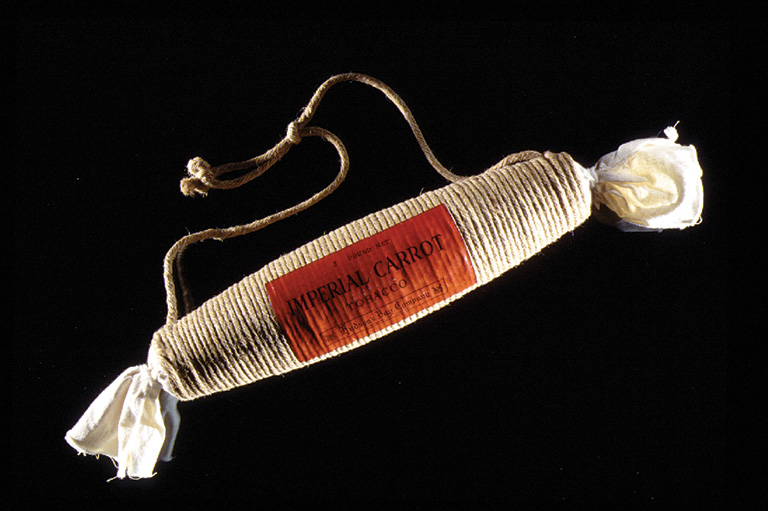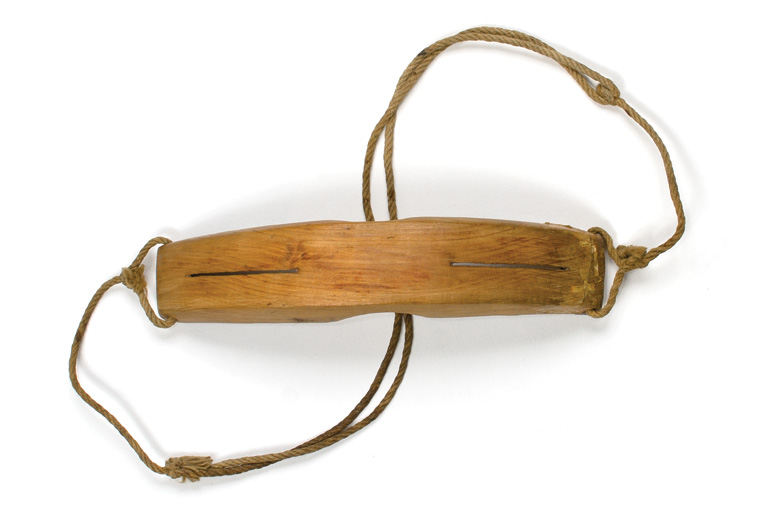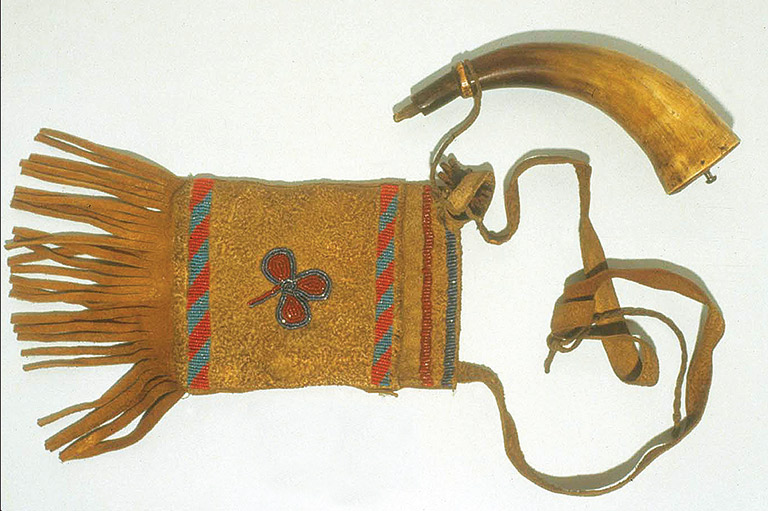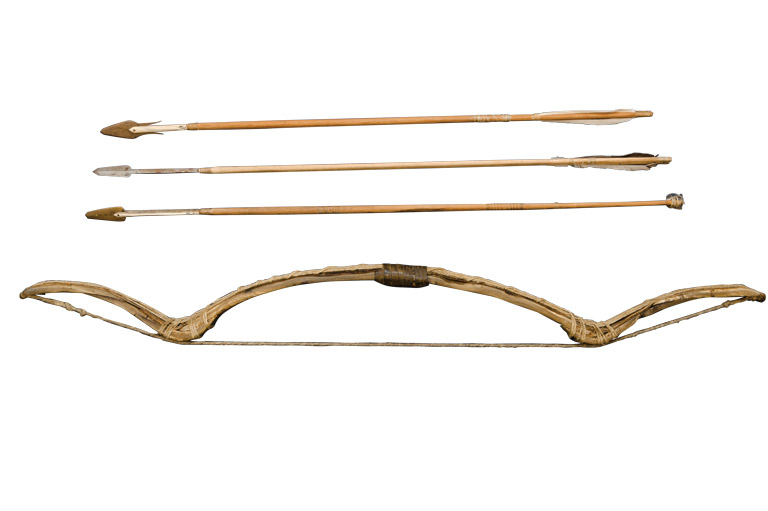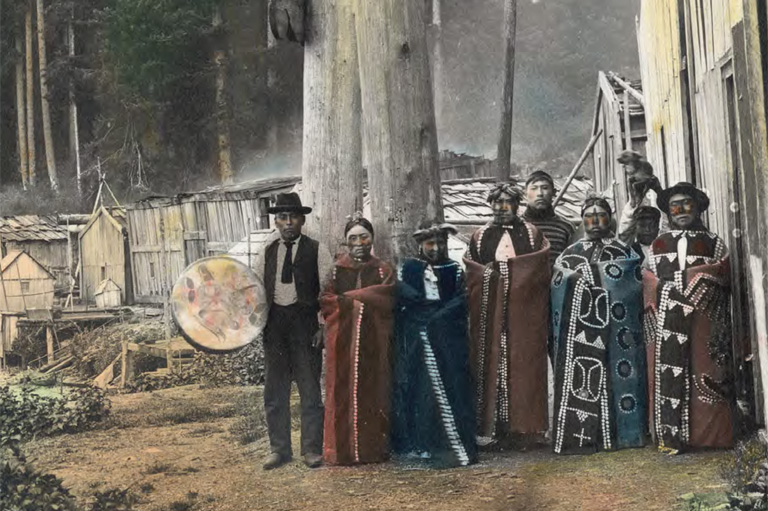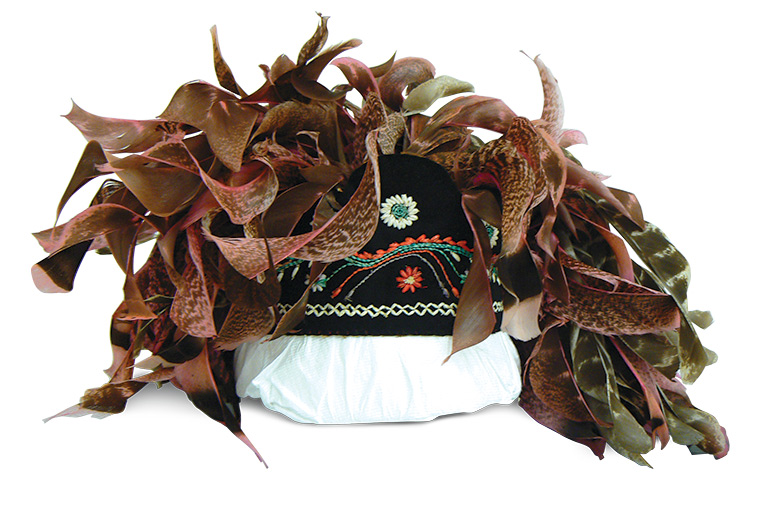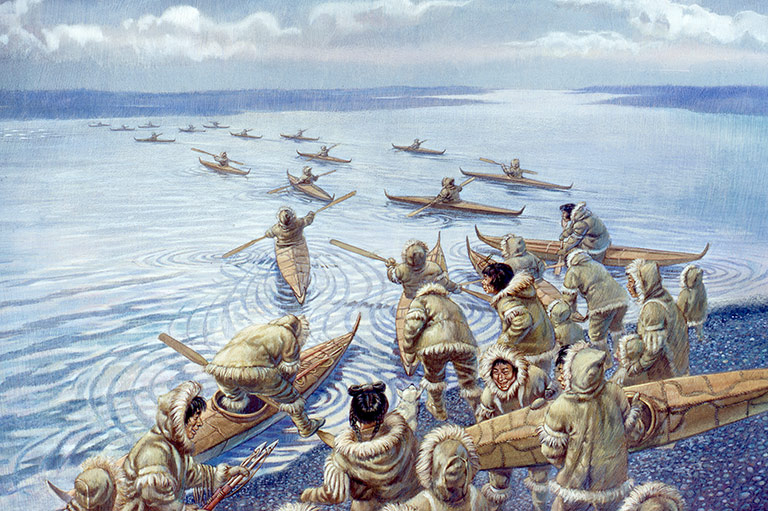Labrets
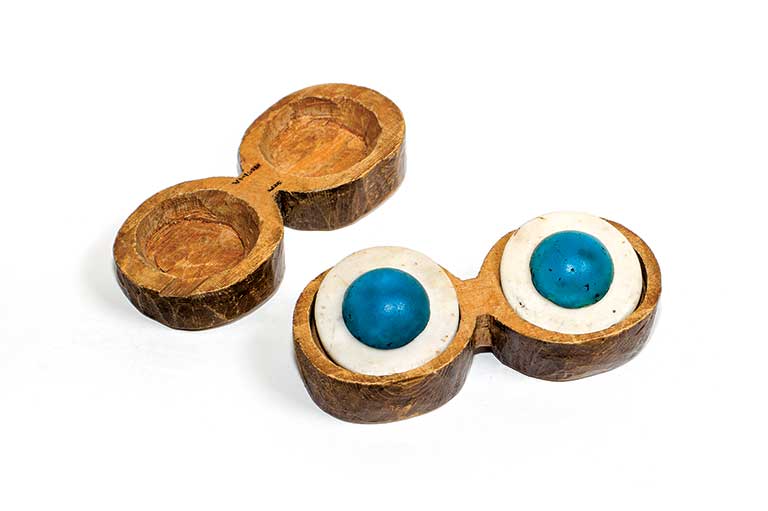
Labrets are facial jewellery traditionally worn mostly by men in holes below each corner of their mouths. The use of labrets is common in many Indigenous cultures, but within Inuit communities it seems to have been restricted to the Mackenzie Delta region and areas further west.
A small incision was made with a slate lancet, and initially a very small labret would have been inserted. The flat plate of the labret was inserted through the hole and worn against the gums, while a post protruded through the hole with a larger piece decorating the face. Gradually larger labrets were inserted over time to stretch the hole in the facial skin to a final diameter greater than a centimetre.
Labrets were made from ground stone, ivory, bone, or coal, with their sizes and shapes varying according to the age of the wearer and his home region. Large blue glass beads similar to those that decorate these late nineteenth-century labrets were traded across the Bering Strait from Siberia, after perhaps coming from China or Korea.
This pair of labrets was purchased from an Inuit elder by J.W. Mills in July 1898, possibly at Fort McPherson, Northwest Territories, or along the coast of Alaska. Born in New Brunswick, Mills worked for the Hudson’s Bay Company as a captain aboard ships in the Arctic region throughout his thirty-three-year career. When he acquired these labrets, he was at the helm of SS Wrigley, a steamer primarily sailing the Mackenzie River.
Advertisement
With 7 uniquely curated newsletters to choose from, we have something for everyone.
We hope you’ll help us continue to share fascinating stories about Canada’s past by making a donation to Canada’s History Society today.
We highlight our nation’s diverse past by telling stories that illuminate the people, places, and events that unite us as Canadians, and by making those stories accessible to everyone through our free online content.
We are a registered charity that depends on contributions from readers like you to share inspiring and informative stories with students and citizens of all ages — award-winning stories written by Canada’s top historians, authors, journalists, and history enthusiasts.
Any amount helps, or better yet, start a monthly donation today. Your support makes all the difference. Thank you!
Themes associated with this article
Advertisement

